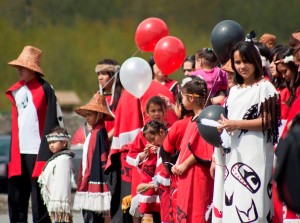Conflicts of Laws Under First Nations Self-Government Agreements

The era of First Nations self-government agreements began in 1975 with the signing of the James Bay and Northern Quebec agreement. The next agreement was not signed until 1993. Since then, close to two dozen more have been signed and several more are under negotiation. These agreements recognize a broad range of regulatory, administrative, and legislative powers in areas ranging from taxation, to resource management, to education.
Given the broad range of legislative powers recognized under the agreements, there is a need to determine what would happen in the event that First Nations laws conflict with federal and/or provincial laws.
The agreements themselves, many of which run five hundred pages or more, identify quite exhaustively which laws will prevail in the event of conflict. For example, the Sioux Valley Dakota agreement recognizes Sioux Valley jurisdiction to legislate in respect of the surveying of lands in their territory. Further, it states that if a Sioux Valley Nation law regarding surveys “is inconsistent with any applicable federal or provincial law, then the Sioux Valley Dakota Nation Law prevails to the extent of the inconsistency.” The primacy of Sioux Valley Dakota Nation Law extends to a number of other areas, including citizenship, health, and family law. In respect of legislation pertaining to the establishment and functioning of an indigenous court, Sioux Valley laws take precedence in determining the qualifications of advocates, rules, and procedures of the court, and the application of Sioux Valley Dakota law.
First Nations law prevails over federal and provincial law in quite a remarkable number of instances. The Nisga’a annual fishing plan prevails over federal and provincial laws of general application, while Nisga’a laws concerning the functioning of the Nisga’a Lisms Government hold an advantaged position. The Champagne and Aishihik agreement provides that all provincial laws of general application are inoperative if the First Nation has already legislated on the same matter.
On the other hand, federal, and sometimes provincial, law may take precedence in the event of conflict. The Sioux Valley Dakota have jurisdiction to legislate in respect of agriculture, though federal and provincial laws prevail to the extent of any conflict. Similarly, the Nisga’a agreement states that federal and/or provincial law will be given precedence wherever a Nisga’a law has an incidental effect on an area beyond the jurisdiction recognized in the agreement. Though the Nisga’a agreement recognizes Nisga’a control of Crown land in the territory delineated in the agreement, Canada retains the authority to carry out activities related to national defence pursuant to federal law.
Federal law also retains a privileged position on account of a residual power. The Sioux Valley Dakota may create offences, penalties, and sanctions in relation to matters under their jurisdiction, but those sanctions cannot create a fine, punishment, or term of imprisonment greater than that which would be found in the Criminal Code for offences punishable on summary conviction. Similarly, though the Sioux Valley Dakota have jurisdiction to craft rules of procedure for their own courts, those rules must, by the terms of the self-government agreement, be reasonably similar to those found in federal and provincial jurisdictions.
Thus, while First Nations law is given primacy in a number of enumerated areas, the content of those laws is often constricted by the terms of the self-government agreement itself. Any disputes arising under the agreement are ultimately reviewable in the Canadian courts and, while many of the self-government agreements have constitutional protection under section 35 of the Constitution, such rights may ultimately be infringed subject to the requirements of the Sparrow and Badger tests. Other agreements do not have constitutional protections and, presumably, breaches would be subject to the remedies available under contract law, with the “honour of the Crown” placing an additional burden of good faith dealing on the Crown. In other words, though First Nations laws are given primacy in a number of areas, it should be recognized that there is a residual power in the Crown that legally, albeit not necessarily ethically, provides a means of rendering that primacy somewhat superficial.
Thus, the scope of First Nations jurisdiction under self-government agreements should not be overstated. In nearly all instances where First Nations law prevails in the event of conflict, the scope of what those laws may entail has been laid out in some detail in the agreements themselves. Nonetheless, law-making authority is recognized in a broad range of areas and, despite the efforts of the parties to detail which law prevails in the event of conflict, there remains ample opportunity for such conflict to arise.
So, what happens if there are conflicts in areas not detailed in the agreements? Though there is some degree of variation in the agreements, several state explicitly that common law conflict of law rules will apply.
The application of common law conflict of law rules raises a number of interesting questions and possibilities. It raises the spectre, for example, of a provincial court applying common law conflict of law rules to determine that it should resolve the issue before it by applying the laws of a self-governing First Nation. As First Nations courts become a reality, it also raises the possibility of those courts applying the common law to determine which law to apply to a given case. These scenarios may have the effect of extending the applicability of First Nations law beyond cases dealing only with issues arising between their own citizens on their own territory. The fact that the self-government agreements themselves so extensively determine which laws will be given primacy ensures that the jurisprudence on conflict of laws will rarely be applied, though its application would nonetheless lead to fascinating new interactions between First Nations and Canadian law.
